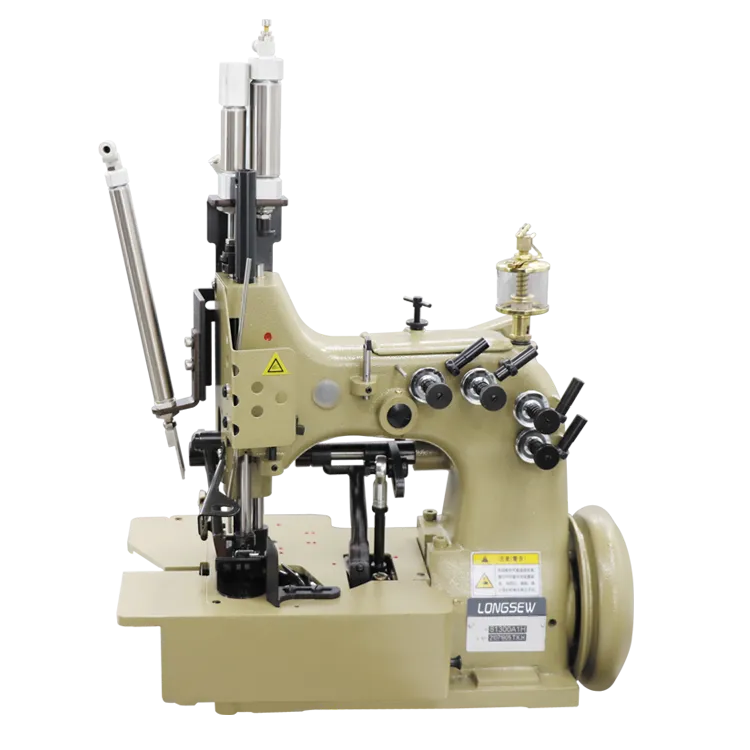Understanding the Purpose of Double Needle Sewing in Machines
Understanding the Double Needle in Sewing Machines
When it comes to sewing, the right tools can significantly enhance both the process and the outcome of your projects. One such tool that can elevate your sewing capabilities is the double needle. This unique device is often overlooked by beginners but offers numerous advantages to both novice and experienced sewists. In this article, we will explore what a double needle is, how it works, and its various applications in sewing.
What is a Double Needle?
A double needle is a sewing needle that features two needle points attached to a single shank. The two needles are spaced apart at a predetermined distance, usually between 2mm to 6mm. This design allows sewers to create two parallel lines of stitching simultaneously, which is particularly useful for a variety of sewing applications. Double needles come in various sizes and types to cater to different fabric types and sewing techniques.
How Does a Double Needle Work?
Using a double needle requires a compatible sewing machine, most modern machines are designed to accommodate double needles. To use a double needle, you need to follow these simple steps
1. Installation First, replace your standard needle with the double needle in your sewing machine’s needle clamp. Ensure that the needle is installed correctly, as improper installation can lead to skipped stitches or damage to your machine.
2. Threading When threading a double needle, you will need to use two spools of thread. Each thread is fed through its corresponding needle, and the machine will use the same bobbin thread for both needles. This means you will use the normal single threading technique with a twist.
3. Selecting Stitch Settings Most sewing machines have a variety of stitch settings that work excellently with double needles. Straight stitches and certain zigzag stitches can create visually appealing designs and finishing techniques.
4. Testing Always test your stitching on a scrap piece of fabric before starting on your main project. This ensures that your tension and stitch types work well together and that you achieve the desired effect.
what is the double needle with sewing machine for

Applications of Double Needles
The double needle has many applications, making it a versatile tool in sewing. Here are some common uses
1. Hemming One of the most popular uses of a double needle is for hemming. It creates a professional-looking hem on knit fabrics by mimicking the appearance of cover stitching without the need for a specialized cover stitch machine.
2. Decorative Stitching Double needles can be used to create decorative parallel lines or patterns on fabric. Using contrasting colors can add flair to your sewing projects, giving them a stylish edge.
3. Attaching Elastic When sewing elastic into seams, a double needle can ensure that the elastic lies flat and secure, allowing for a more comfortable fit, particularly in garments like leggings and fitted tops.
4. Faux Flatlock Stitching This technique is particularly popular in knit fabrics. The double needle allows you to sew faux flatlock seams, which are not only functional but also add a unique design element to the garment.
5. Quilting For quilters, double needles offer an opportunity to sew in a decorative manner on quilt layers without the need for intricate quilting techniques.
Conclusion
The double needle is a remarkable tool that can expand your sewing repertoire significantly. Whether you are hemming fabrics, creating unique decorative features, or ensuring a professional finish, the double needle is an invaluable addition to any sewing kit. By understanding how to use it effectively and exploring the various applications, you will be able to take your sewing projects to a new level. So, the next time you sit down at your sewing machine, consider trying out a double needle and enjoy the creative possibilities it opens up.
-
Boost Production Efficiency with a Pattern Sewing MachineNewsAug.29,2025
-
Industrial Excellence with the Best Heavy Duty Sewing MachineNewsAug.29,2025
-
Precision and Power with the Best Pattern Sewing MachineNewsAug.29,2025
-
Reliable Bulk Packaging Starts With the Right FIBC Sewing MachineNewsAug.29,2025
-
Advanced Packaging Solutions: Elevate Productivity with Jumbo Bag Sewing Machine and Industrial Stitching EquipmentNewsAug.29,2025
-
High-Performance Solutions for Bulk Packaging: FIBC Sewing Machine and MoreNewsAug.29,2025
-
Maximize Efficiency with an Industrial Cylinder Arm Sewing MachineNewsAug.28,2025


























